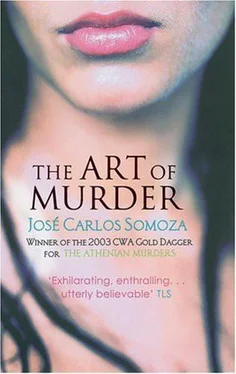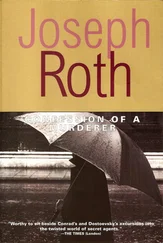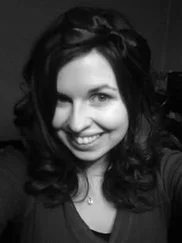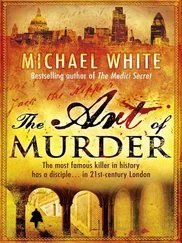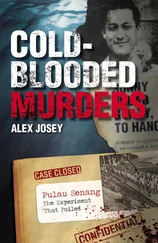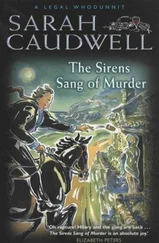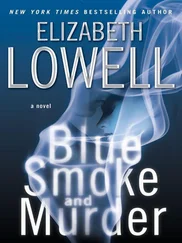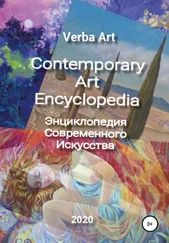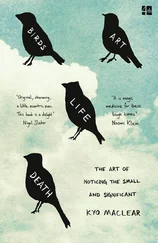Jose Somoza - Art of Murder
Здесь есть возможность читать онлайн «Jose Somoza - Art of Murder» весь текст электронной книги совершенно бесплатно (целиком полную версию без сокращений). В некоторых случаях можно слушать аудио, скачать через торрент в формате fb2 и присутствует краткое содержание. Жанр: Триллер, на английском языке. Описание произведения, (предисловие) а так же отзывы посетителей доступны на портале библиотеки ЛибКат.
- Название:Art of Murder
- Автор:
- Жанр:
- Год:неизвестен
- ISBN:нет данных
- Рейтинг книги:4 / 5. Голосов: 1
-
Избранное:Добавить в избранное
- Отзывы:
-
Ваша оценка:
- 80
- 1
- 2
- 3
- 4
- 5
Art of Murder: краткое содержание, описание и аннотация
Предлагаем к чтению аннотацию, описание, краткое содержание или предисловие (зависит от того, что написал сам автор книги «Art of Murder»). Если вы не нашли необходимую информацию о книге — напишите в комментариях, мы постараемся отыскать её.
Art of Murder — читать онлайн бесплатно полную книгу (весь текст) целиком
Ниже представлен текст книги, разбитый по страницам. Система сохранения места последней прочитанной страницы, позволяет с удобством читать онлайн бесплатно книгу «Art of Murder», без необходимости каждый раз заново искать на чём Вы остановились. Поставьте закладку, и сможете в любой момент перейти на страницу, на которой закончили чтение.
Интервал:
Закладка:
She listened to all of this in silence. When she opened her eyes again, Gerardo had disappeared from her field of vision. The strong smell of the hairspray filled her nostrils. Then Gerardo's hands reappeared. This time they were holding a small pot of ochre paint and a fine paintbrush.
'For me there's a frontier,' he said, dipping the brush in the paint and leaning over Clara's face. 'A frontier, sweetheart, that art will never be able to cross. The frontier of emotions. On one side there are people. On the other, art. Nothing in the world can cross that frontier.'
'He's painting eyebrows on me,' she thought. She stiffened, wondering whether she ought to tell him that perhaps the Maestro did not want her to have features, but in the end she said nothing. She could feel the cold curves of the brush on her forehead.
Gerardo's hand was steady as he drew the precise firm lines of the curves, and pointed the wet dip of the brush down towards her eyes. She shut them, and felt something like a bird's caress: tremulous beating, then the start of the delicate fringe of her eyelashes, the frame of her gaze.
‘I believe in art, sweetheart, but I believe much more in emotions. I cannot betray myself. I prefer a thousand times a mediocre work of art to the contempt of someone I like…
Someone I have begun to… respect and to get to know… Don't move…'
Eyebrows. Small drops of brown lashes. The faintest of touches at the corner of her eyes. Clara was about to speak, but Gerardo stopped her with a gesture.
'Silence, please. The artist is about to put the final touches to his creation.' A line curving neatly upwards from the left side of her mouth.
'I reckon the world wouldn't be so perverse if everyone thought the same as me… the lips are always really difficult… why have they got such a strange shape? It must be so they can tell lies.'
The line moved on downwards. To Clara it felt as though a bird were walking around the edge of her mouth.
‘I like it,' said Gerardo, standing back to get a good look at her. 'Definitely, I like it. You've turned out very beautiful. Wait, then you can see yourself.'
He picked something up from the washstand. It was a small round mirror. He came back to her. 'Ready?'
Clara nodded. Gerardo was holding up the mirror as if he was a priest with a consecrated host, and put it in front of her face. She looked at herself. A face with features looked back at her.
Gentle waves beneath her forehead, elliptic waves, a symmetry of ochre curves. She raised her unexpected eyebrows, amazed at her newly born way of expressing astonishment. She blinked, and felt the caress of eyelashes darting like sparrows around the language of her eyes, eyes which had never been silenced, only deprived for some time of their appearance, but now once again shone full of light. She smiled and lifted the corners of her mouth to demonstrate that a slit cut into a face could never, ever be a smile; that a real smile was what Gerardo had painted on her: a mass of shapes relaxing, a distorted volume moving at the same moment as the eyes fulfil their mission and the eyelids close. It was wonderful to have features once again.
Gerardo held up the mirror with her face floating in it like a precious gift.
'At last I can see you smile,' he said, very serious. 'And hard work it was, sweetheart. But finally you're smiling at me.'
Clara was impressed by his seriousness. She thought that perhaps she had misjudged him from the start. It was like seeing him for the first time. As if there were something inside Gerardo that was much wiser, more mature than he himself or the words he spoke. For a moment she thought that Gerardo's face had also been painted, delineated like hers, but with more indistinct shadows. It was a fleeting vision, but for that split second she thought the secret of life consisted in getting beyond the features drawn, and reaching the people who lay behind them.
She had no idea how long she sat like that, in front of the mirror he was holding up for her, looking at it and at herself. All at once she heard his voice again. But the mirror was no longer there, and Gerardo was leaning over her. His face was taut and nervous.
'Clara… Clara, he's here… I heard his car… Listen to me
… Do everything he asks you to… don't quarrel with his way of working, do you hear?… Above all, above all, don't argue with him
… And don't be surprised whatever he asks… he's a very strange man… he likes to confuse his canvases… Be careful with him. Very careful.'
At that moment they heard Uhl's voice calling them. Words in frantic Dutch, the sound of doors. They ran to the living room, but there was no one there. The front door was open, and they could hear a conversation out on the porch. They went out together, then Clara came to an abrupt halt.
There was a man with his back to her, talking to Uhl. His silhouette stood out against the evening sky: an austere, black shadow.
Uhl saw Clara and gestured to her. He was very pale. 'Let me introduce you… to Mr Bruno van Tysch.' Then the man turned slowly to face her.
Third Step
Now we have to define the figures: to give them a look, an identity. Not until the figures have been fully delineated in this way can we say that the work is finished.
BRUNO VAN TYSCH Treatise on Hyperdramatic Art'The question is,' said Alice, 'whether you can make words mean so many different things.'
'The question is,' said Humpty Dumpty, 'which is to be master- that's all'
LEWIS CARROLL Through the Looking GlassThe figure seated behind the desk is a mature, thickset man. He is wearing an immaculate dark-blue suit with a red label attached to the top jacket pocket. He is sitting at the centre of a V-shaped desk, with three framed photos on one side of it. The light streaming in through two high windows behind him emphasises his bald patch, surrounded by tufts of white. There is a certain nobility to his features: blue eyes, aquiline nose, thin lips, and wrinkles that show the inevitable passage of time but give him a distinguished look. He appears to be listening closely to what he is being told, but if we observe him more closely, perhaps he is only pretending to concentrate. He is tired and worried, and cannot really take in what he is hearing, so he is barely following it. His head aches. And on top of all this, it's Monday. Monday 3 July, 2006.
'What's the matter, Lothar? You seem lost in space.'
Alfred van Hoore (the man speaking) and his colleague Rita van Dorn were studying him wide-eyed. At that moment (or until the moment Bosch went into his trance) they had been discussing the best distribution of security agents among the guests at the press viewing of the 'Rembrandt' collection on 13 July. Van Hoore thought extra protection was needed for Jacob Wrestling With the Angel, the only work from the collection due to be shown that day. The two agents on each side of the work were not enough – in Van Hoore's view – to prevent someone in the front row from leaping on to the plinth with a sharp instrument and damaging Paula Kircher or Johann van Allen, the two canvases who made up Jacob. He was arguing for another two agents to be placed in the centre, because an attack from there could not be repelled in time from the sides. And then there were the long-distance threats. He showed Bosch a computer simulation in which a supposed terrorist threw an object at the work from any point in the room. Van Hoore was young and loved simulations; he designed them himself. He had learned to programme them when he was coordinating security for exhibitions in the Middle East. Bosch thought Van Hoore would have liked to have been a film director: he moved the computer figures around as if they were actors, dressed them up and gave them human gestures. It was during the computer simulation that Bosch had got lost. He could not bear these silly cartoons.
Читать дальшеИнтервал:
Закладка:
Похожие книги на «Art of Murder»
Представляем Вашему вниманию похожие книги на «Art of Murder» списком для выбора. Мы отобрали схожую по названию и смыслу литературу в надежде предоставить читателям больше вариантов отыскать новые, интересные, ещё непрочитанные произведения.
Обсуждение, отзывы о книге «Art of Murder» и просто собственные мнения читателей. Оставьте ваши комментарии, напишите, что Вы думаете о произведении, его смысле или главных героях. Укажите что конкретно понравилось, а что нет, и почему Вы так считаете.
